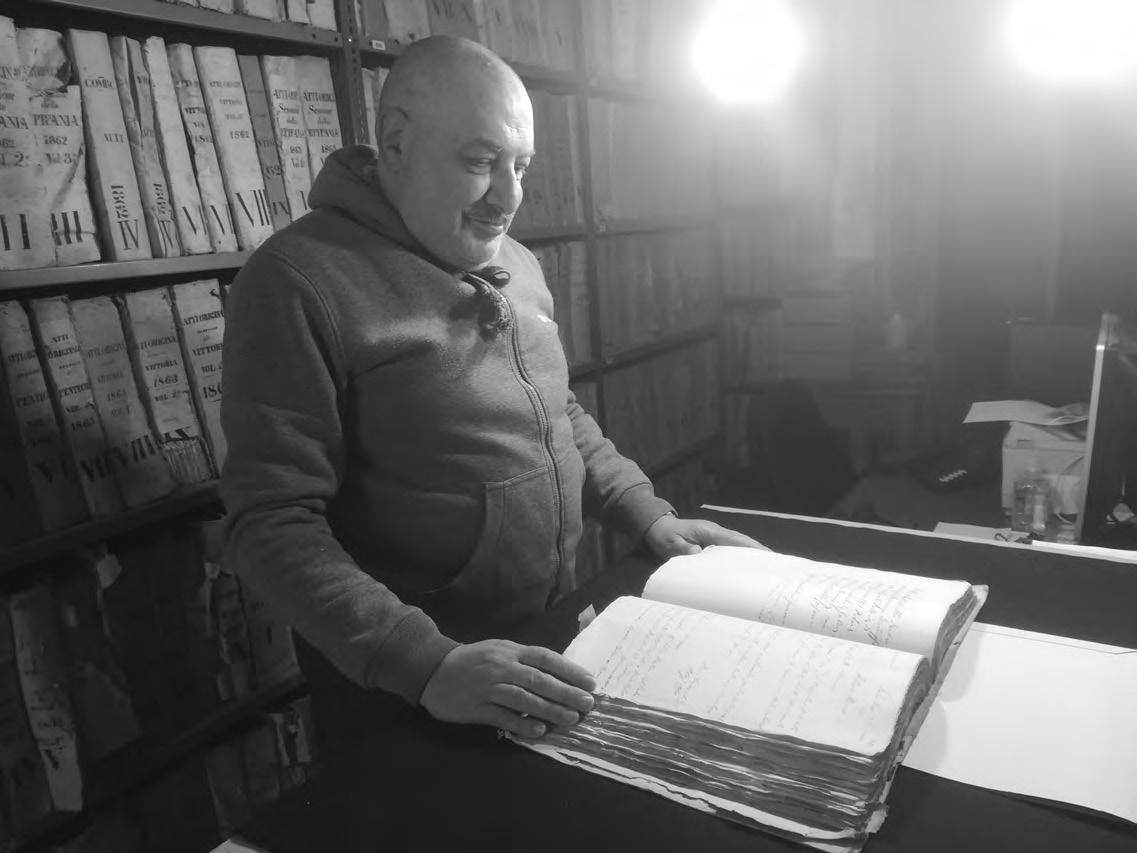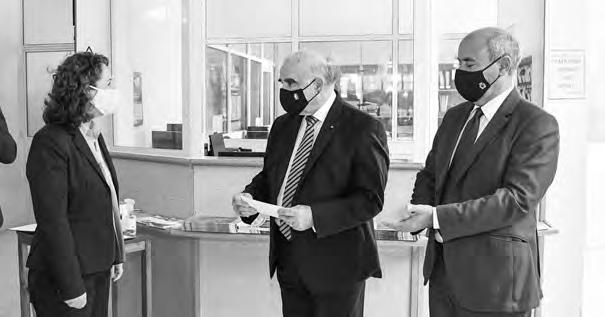
6 minute read
6 Courts And Tribunals Section
6.1 Research and Reading room services
Although the pandemic crises of the Covid-19 had significant impact on all services, the Courts and Tribunals Section has registered a significant increase of volumes and items consulted. During 2020, 213 researchers visited the section at the Mdina Banca Giuratale consulting 3622 items and spending around 686 hours of research mainly during February, March (before the virus hit the Island), and in June and July when life almost returned back to normality. The most requested documents were the Concorsi, Libelli and Deroghe, and the Processi Appelli Civili files.
Advertisement
It is worth noting that the volumes of the Officium Commissarior Domorum and Officium Causarum Delegator et Domorum attracted the interest of scholars and researchers.
However, the number of researchers and hours of research decreased by 20% and 36% when compared to the previous year. Research at all premises of the National Archives was held by appointment.
During February and March 2020, 18 students reading for a Masters in Notarial Studies under the supervision of Dr Joan Abela, achieved 30 hours hands-on practical experience on the volumes of the Atti di Accusa and the Sentenze belonging to the fond of the Criminal Court. The post-graduate students analysed all the acts for the years post-Criminal Code between 1854 and the early 1870s and compiled a chronological detailed list of all cases including case number, year, the names involved, nicknames, father’s name, nationality, residence, occupation, detail of the crime committed, sentence given and its date. This data will soon be available on the Archives catalogue platform for consultation.
6 COURTS AND TRIBUNALS SECTION

6.2 Sorting, Pagination and Cataloguing
During the past twelve months, we concentrated on the pagination and indexing of the volumes and bundles entitled Registrum Patenatarum under the fond of the Magna Curia Castellania. The various fascicles which listed the passengers who departed from the Island between 1564 to 1798 were bound in 37 volumes. The bundles were cleanedup and documents were placed in Archival quality boxes. Data was originally compiled chronologically but unfortunately there are several records listing an entry of a particular date more than once. These entries are being noted and appropriately listed for the benefit of the researchers.
For the second half of the year 2020, two archivists were engaged in the sorting, arranging and cataloguing of the Letard-Ciantar genealogy collection. This comprises over 700 volumes and hundreds of loose documents of dates of birth notes, marriages, deaths, contracts, notarial deeds, benefits, legacies, wills and concessions on titles of Maltese and Gozo nobility which has been added to the National Archives collection. The information in the collection dates from the year 1400 and sometimes even dates back to 1380 and also includes information about urban lands, leases and genealogical links. In the coming days, work will continue on the preservation for prosperity of the records and will be open for research and studies. Cataloguing data is in process to be completed and will be available for view on the official website of the National Archives of Malta.
6.3 Other activities
In mid-September, 11,000 photographs by Guido Stilon were donated to the National Archives. The donation ceremony was held at the Courts and Tribunals Section and presided by Dr Josè A. Herrera, the Minister for the National Heritage, the Arts and Local Government, The CEO and the National Archivist Dr Charles J. Farrugia and Grace Cilia Vincenti, who
donated the collection. Due to the Covid restrictions, unfortunately, an exhibition of photos from the Guido Stilon Collection at the Banca Giuratale was not open to the general public.
In view of the Covid-19 situation, the annual Mdina Medieval Festival had also been cancelled. The Banca Giuatale’s portrait exhibition was also closed for the public until further notice.
6.4 Presentations
On the 27th October, Irene Sestili and Noel D’Anastas delivered an online lecture on the archival description used on the Letard-Ciantar Collection to the undergraduates reading for the Bachelor’s degree on Archival Science. During November, two officers from the National Archives were the guests of lecturer Dr Charles J. Farrugia introducing archival sources on the Master in Maltese Studies course at the University of Malta. Noel D’Anastas discussed the sources at the Banca Giuratale while James Baldacchino explained the Memorja project.
A short film in the form of a docudrama making use of primary sources from the Criminal fond archived at the Courts and Tribunals Judiciary Section and filmed at the Mdina Banca Giuratale had won a prestigious award in an international film festival in Germany. The film which was produced and directed by Lara Azzopardi tells the story of an 18-year-old girl, Duminka Galea known as ‘Kużra’ and a crime that took place in Naxxar in the mid-19th century in mysterious circumstances. Lara produced this short film as part of her Masters in Film Studies at the University of Malta.
Noel D’Anastas assisting students reading for a Masters in Notarial Studies during a hands-on experience on the volumes from the Criminal Court fond.
6 COURTS AND TRIBUNALS SECTION

6 COURTS AND TRIBUNALS SECTION

On 23 September 2020, the President of Malta George Vella visited the National Archives. He was given a tour of the building by the Chief Executive Officer, National Archivist Dr Charles J. Farrugia, who also introduced him to the staff, as well as students who are currently fulfilling part of their studies at this institution. The President was briefed on the processes of cataloguing, restoration, and cleaning of documents, as well as on research and digitisation. He was also shown several documents of historical relevance, including a Notification issued by the Governor Maitland during the 1813 Plague, drawing a parallel with the current COVID-19, imposing quarantine and penalties for violations.
“The public should know more about this place, because this is a repository of a large part of our country’s history; a history written through documents, maps, or building plans and books that reflect what has been going on in our country for many years”, said the President of Malta. “This is a place where all items with a link to our country’s history, as chosen by experts, are kept. It is very interesting to meet students and researchers who are using this material for their studies and to produce their dissertations. I am very happy to see that these great treasures are being professionally curated”.
Dr Vella shared his hope that the National Archives would continue to develop and referred to the plan for them to move to a new, state-of-the-art building that will be constructed on a site already identified in Ta’ Qali. At the same time, he expressed his wish that the present building, which formerly served as the Santu Spirtu Hospital and which was first documented as such in the 14th century, be preserved and turned into a museum.
Minister for National Heritage, the Arts, and Local Government José Herrera was present for the visit.












